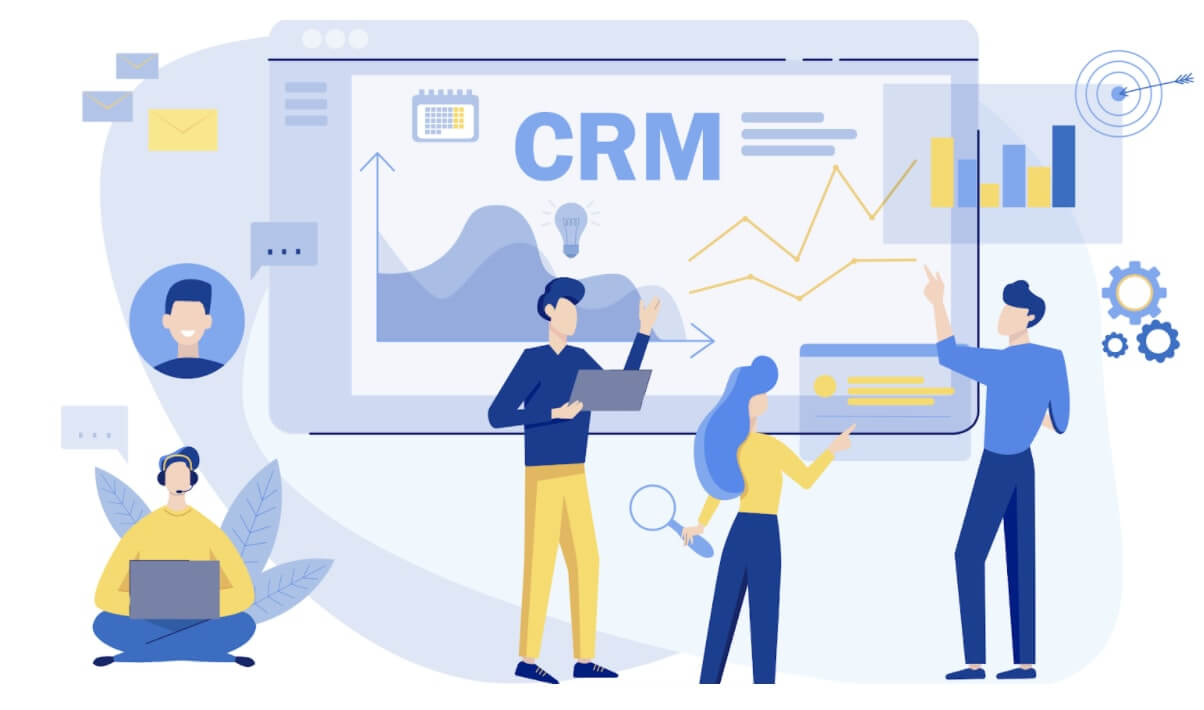Whether you’re a sales wiz or brand-spankin’ new to the job, you know that building sales is all about reaching the right people at the right time with the right message. After all, what’s the point of pitching a product or service to someone who has no need or want for it in the first […]
Whether you’re a sales wiz or brand-spankin’ new to the job, you know that building sales is all about reaching the right people at the right time with the right message. After all, what’s the point of pitching a product or service to someone who has no need or want for it in the first place? You can’t be everyone’s cup of tea, and if you’re going to kick your sales into high-gear, you’ll need to create a high-quality sales prospect list filled with your ideal customers. Answer the following questions about how to build prospecting lists, and get ready to build sales and rock your sales prospecting process.
1. Know your product and target market
Before you create a prospecting list, it’s paramount to know exactly what you’re going to offer your prized prospects. After all, how are you supposed to figure out who needs your product if you don’t have a solid understanding of what you’re selling? This is where product training comes in handy.

“An investment in knowledge always pays the best interest.” – Benjamin Franklin
If you’re a sales representative, you’ve probably experienced a lengthy onboarding process to join your company where you would have learned all about the product or service you offer. This is good, but not quite good enough. You need to go above and beyond in order to become a true expert of what you’re selling. You can do this with a little bit of additional training and learning. According to the Association for Talent Development (ATD), “companies that offer comprehensive training programs have 218% higher income per employee.”
We know sales reps are strapped for time, so how can you maximize your training to gain extensive product knowledge without spending hours learning? We recommend you carve out some time to simply read your company’s use cases and success stories. If you can, listen to as many recorded calls with both sales and customer service as possible, because real-world use cases are the best way to improve your product knowledge and understanding of the customer experience. Deeper product knowledge will help you feel more comfortable when talking to prospects; this will help you land you close more deals. Additionally, product knowledge will help you better understand who your ideal prospects are.
Here is a list of some more product knowledge training strategies you can provide yourself or your team:
- Practice opportunities– use simulations and role-plays to provide the opportunity to apply product knowledge to real-life scenarios.
- Partner up with marketing- your marketing team has a ton of useful and relevant collateral on your product for you to read through. Don’t reinvent the wheel when you have experts at your fingertips!
Tip: Micro-learning- Chop up training into bite-sized pieces so that you can better retain the information. Make sure the training is always relevant and use short videos or slides to present the information in a way that is memorable and easy to retain for you or your salespeople. E.g.: set up a bi-monthly zoom with your team to go over one product feature.
Remember: product knowledge training is not a ‘set it and forget it’ thing; it’s on-going. As your product or service and company evolve, so should your knowledge and training. Make sure to stay clued in on all the latest news, features, and offers of your company, and don’t forget to go back and refresh your memory too once in a while!
2. The ideal customer – define your perfect prospect

“If you’re talking to everyone, you’re talking to no one.”
Now that we’ve got the ‘what?’ out of the way let’s dive into the ‘who?’. You might have the most excellent product and killer sales pitch out there, but if it’s pitched to everyone or the wrong person, you’re wasting valuable time. Would you sell a dating ebook to your great aunt who’s a 70-year-old cat-lady? Probably not. If you want to build sales, don’t just sell to anyone, be smarter than that. We recommend developing buyer personas to dream up and pinpoint your ideal customer.
Buyer personas help companies understand who their customers are so that they can design a more relevant and tailored experience. With buyer personas, you can better target your sales messaging and pitches to solve your customers’ pain points. This means you will spend less time pitching to the wrong people, and more time converting qualified leads who are more likely to turn into sales opportunities.
Hubspot defines a buyer persona as “A semi-fictional representation of your ideal customer based on market research and real data about your existing customers.” Learning about your ideal prospect and their company, who the decision-makers are, their challenges, goals, and demographic traits, will help you create a sales strategy aimed at attracting and converting the most valuable prospects and decision-makers.
4 essential questions to ask when developing your buyer personas:
- What’s their industry or vertical?
- How big is their company?
- What are the key issues they’re facing?
- What are their business objectives?
We recommend organizing your buyer persona information into a template to help you better visualize and understand your ideal persona. Be sure to share these templates across your team and company so that everyone can develop an in-depth understanding of the personas you’re targeting. Here’s an example of what your template might look like:

3. Leveraging current customer insights for future sales
We recommended that you pair your buyer persona research with customer research by analyzing internal data about customers that you already have. Take a look at some of your best customers, get to know them intimately by sending them customer surveys, asking for feedback, and analyzing FAQs. Knowing your best customers inside out will allow you to seek similar prospects, and build sales by converting more of your ideal customer persona.
Examples of useful information you can extract from your customer research:
- Company size- are your customers coming from one-size of company? Or a range of sizes?
- Revenue- what do your customers’ companies tend to make within the year? Does it differ across your best customers?
- Likes and dislikes- what do your customers like or dislike about your company and or product/service?
- Engagement- how do your best customers engage? Phone call? Email? LinkedIn? Make sure your sales engagement method aligns with your customers’ personal preferences.
- Goals and success metrics- how do your best customers measure success? What are their goals? Have they achieved them with your product/service?
We also recommend using marketing intelligence tools to map your competition and give you insight into who’s outperforming you, and what you can do to change it.
Tip: download Lusha Extension to gain fast and accurate data points about your prospect’s via LinkedIn, Lusha will help you build your prospects list in a flash. At the click of a button, Lusha Extension not only provides you with your prospect’s personal cell phone numbers and email addresses, but it will also give you additional essential information about your prospects’ company such as company size, location, industry, revenue, and more. These are all incredibly important bites of information that will help you nail your pitch and close sales.
4. Finding your leads
By now, we hope you have a solid understanding of what you’re selling and who you’re selling to, which means it’s time to apply all that knowledge into creating a killer prospecting list filled with high-quality leads. Here’s where to find those leads:
LinkedIn has an astronomical amount of users (over 600 million) and is the go-to channel for connecting with professionals. Use LinkedIn’s filters to narrow down your search and find the key stakeholders and decision-makers who deserve a spot on your prospects list. Utilize the tools on LinkedIn Sales Navigator to build and prioritize your prospecting lists by relevancy. Lusha Contact’s LinkedIn extension makes it easy for you to quickly access your prospect’s phone number and email addresses, as well as relevant company information.
Instagram is a valuable platform for seeking out prospects. Use Insta to search for new companies, and stay up to date on all of your prospects announcements and news. We recommend keeping tabs on your competitors here too.
Twitter might be a surprising one, but you can set up a notification to monitor when someone uses keywords, company-specific phrases, or mentions pain points that your product relieves.
CRMS save lives

If you aren’t already, we highly recommend you use a Customer Relationship Management (CRM) platform to keep track of your leads as well as track and monitor your customers’ journey through the sales pipeline. Organizing your prospect list with a CRM will ensure that none of your valuable leads ever fall through the cracks and that each gets tended to in an organized manner.
Lusha Extension’ LinkedIn extension allows you to integrate with your CRM of choice, meaning once Lusha has retrieved your prospects’ contact information, it will instantly upload the information straight to your CRM. This means you won’t have to worry about manual data entry mistakes when filling up your pipeline with high-quality leads.
Additional reading on prospecting
We hope that by answering those four questions, you’ll be able to create a stellar prospecting list filled with high-quality leads. And if you’d like to gain even more prospecting knowledge, take a look at the following helpful blogs:
- Transform your prospecting process with these sales intelligence tools.
- Learn how to nail your Sales Cadence and convert more prospects.
- Your guide to absolutely crushing your cold and warm sales calls.

